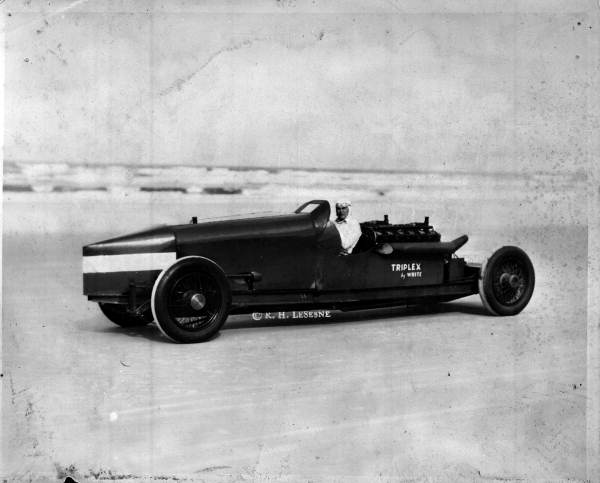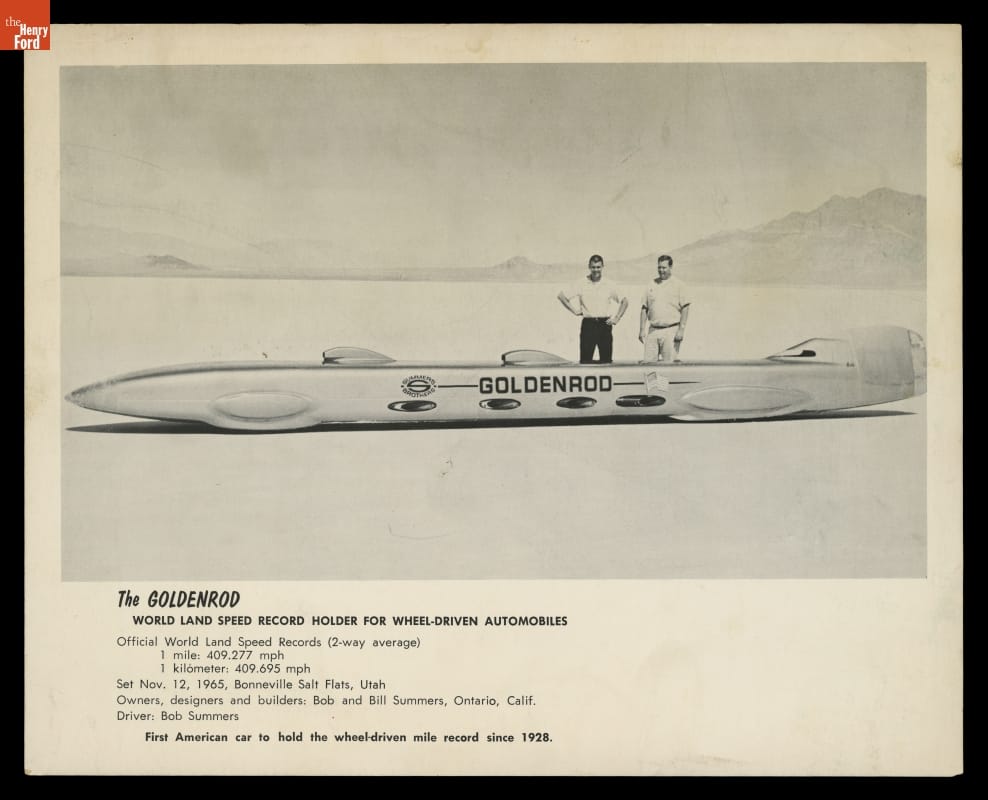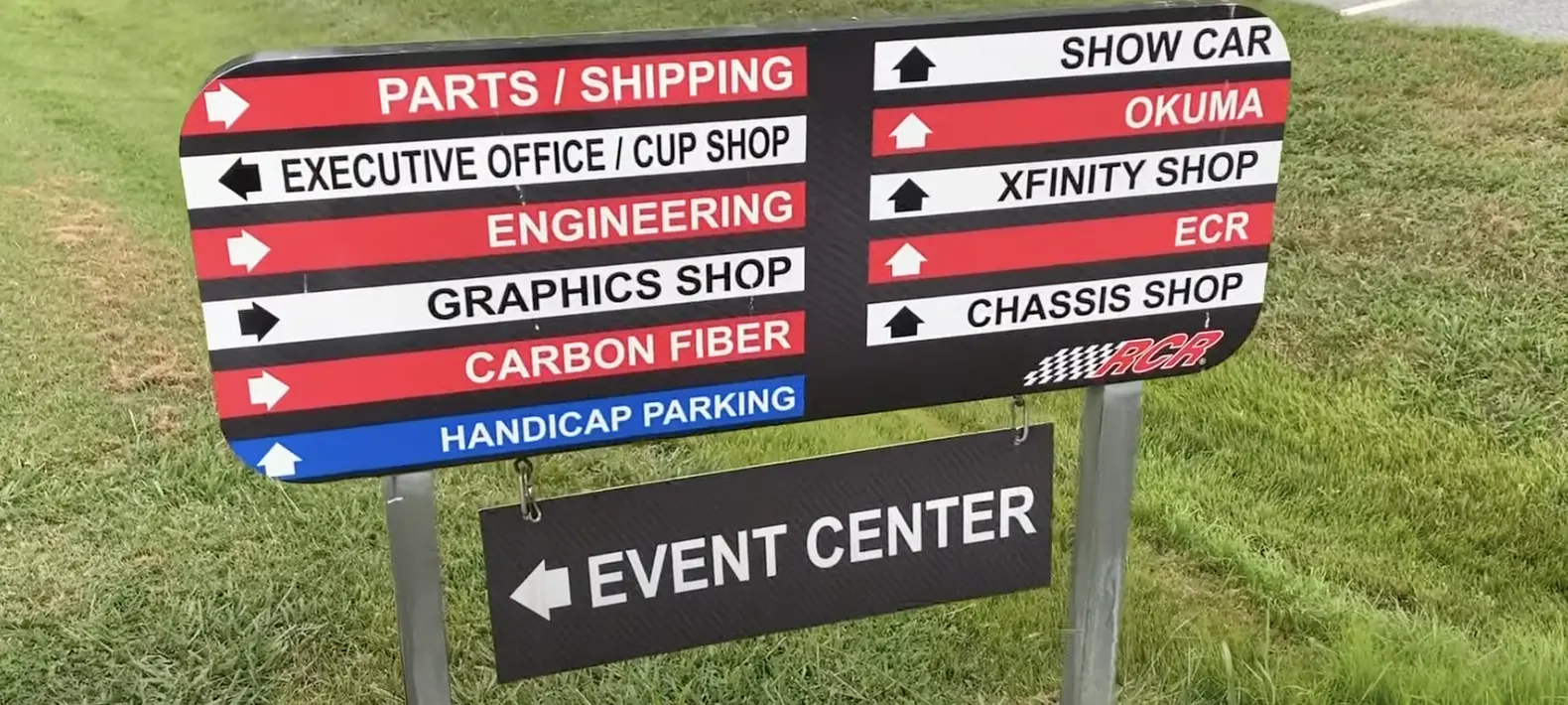Since the first days of automotive engineering, people have wanted to set records for the fastest vehicle on earth. Over the years that’s gone from primitive vehicles moving at speeds we’d consider pedestrian by today’s standards, to literal jet-powered vehicles speeding across the salt flats at hundreds of miles per hour.
Read on to learn how land speed record setting has evolved and the cars that have captured these records.

The Early Days: Steam Power and the Birth of Speed
The late 19th century was a time of rapid technological advancement, with inventors and engineers around the world working to bring the automobile to life. As these early vehicles began to hit the roads, the race was on to see just how fast they could go.
The concept of setting a land speed record was a far cry from the high-octane, high-speed pursuits we associate with today. During the late 19th and early 20th centuries, when automobiles were still in their infancy, speeds of 40-50 mph were considered groundbreaking achievements.
Steam-powered vehicles were among the first to challenge speed limits, with the “Jeantaud Duc” setting the stage with a top speed of 39.24 mph (63.5 km/h) in 1898. This may seem modest by today’s standards, but at the time, it was a groundbreaking achievement. This steam-powered vehicle, with its primitive technology and rudimentary design, captured the public’s imagination and sparked interest in the potential of mechanical transportation.
Despite the relatively modest speeds of 40-50 mph that characterized this early period, the quest for speed was no less intense. Engineers and drivers pushed the limits of available technology, experimenting with new designs and configurations in search of greater performance.
In 1906, the Stanley Rocket, a steam-powered car designed and built by the Stanley Motor Carriage Company, set a land speed record of 127.659 mph (205.447 km/h) on the sands of Ormond Beach, Florida. Driven by Fred Marriott, the Rocket was a streamlined vehicle with an innovative lightweight wooden frame and a sleek aerodynamic body designed to reduce air resistance. Powered by a twin-cylinder steam engine, the car’s impressive speed was a groundbreaking achievement for its time. What made the Stanley Rocket’s run particularly unique was its reliance on steam power, a technology that was rapidly being overtaken by internal combustion engines, yet it demonstrated the potential and efficiency of steam propulsion in achieving high speeds.
The upward trend continued when in 1928, the White Triplex set the land speed record, reaching a remarkable 207.552 mph (334.020 km/h) on the sands of Daytona Beach. This monstrous vehicle was powered by three Liberty V12 aircraft engines, producing a combined output of around 1,500 horsepower. One of the unique aspects of the White Triplex was its unconventional design, featuring a minimalistic chassis built solely to house its powerful engines, with no gearbox or clutch. During its record-setting run, driver Ray Keech faced significant challenges due to the vehicle’s immense power and lack of basic controls, making his achievement a testament to both his skill and bravery.

Early Jet-Propulsion Vehicles
In the early 20th century, the internal combustion engine began to dominate, paving the way for faster and more powerful vehicles.
In 1905, a 1904 Napier Samson L48 with a 15-liter, six-cylinder gas engine was the very first car to exceed 100 mph in the U.S., clocking in at 104.651 mph. This marked a new era in land speed records, as engineers and drivers sought to push the envelope further.
The mid-20th century witnessed an explosion of innovation in land speed record attempts. Jet engines and aerodynamic designs became the new frontier, with vehicles like the “Bluebird CN7” and “Spirit of America” capturing the public’s imagination. In 1964, Donald Campbell piloted the “Bluebird CN7” to a record-breaking speed of 403.10 mph (648.73 km/h), showcasing the potential of vehicles using airplane engines. The “Bluebird” was fitted with a Bristol-Siddeley Proteus gas turbine capable of producing 4,100 horsepower at 11,000rpm. It was cobbled together for the modest sum of 1.2 million dollars, or about 12.4 million in today’s money.
Another case is the “Goldenrod,” a four-engine behemoth that set a record in 1965 with a speed of 409.277 mph (658.52 km/h). With its unconventional design and staggering horsepower, the “Goldenrod” stands as a testament to the lengths engineers will go to in the pursuit of speed. The “Goldenrod “was capable of putting out 2,400 hp at 6700 RPM courtesy of its four Chrysler V8s with hemispherical combustion chambers and overhead valves. Shortly after “Goldenrod,” Craig Breedlove’s “Spirit of America” set a new record in 1965, reaching an astonishing speed of 600.601 mph (966.57 km/h). “Spirit” was able to shatter the record set by “Goldenrod” in part because it was equipped with a General Electric J47 turbojet engine taken from a F-86 Sabre fighter jet.
And in 1970, the rocket-powered “Blue Flame,” hit a speed of 622.407 mph (1,001.67 km/h). With its sleek design and raw power, the “Blue Flame” remains a symbol of the audacity and ingenuity that define land speed record attempts. The 6,500-pound “Blue Flame” gained propulsion by a rocket motor powered by both liquefied natural gas and purified hydrogen peroxide. This unique design was capable of generating 22,500 pounds of thrust, or about 58,000 horsepower. The American Gas Association (AGA) funded the endeavor to demonstrate liquefied natural gas’s potential as an alternative fuel.
Over the years, land speed record attempts have produced some truly wild and unconventional vehicles. From rocket-powered sleds to three-wheeled behemoths, these machines defy conventional wisdom and push the limits of engineering creativity.
In these early days, land speed record attempts were as much about innovation and experimentation as they were about pure speed. From aerodynamic improvements to engine enhancements, every aspect of a vehicle was scrutinized and optimized to squeeze out that extra bit of performance.
Jet-Propulsion vs. Conventional Engines
Jet propulsion vehicles like the ThrustSSC can reach incredible speeds and can produce an immense thrust, allowing vehicles to reach speeds that are simply unattainable with conventional engines. This has enabled jet-propulsion vehicles to set some of the highest land speed records in history. They have fewer moving parts compared to conventional engines, leading to reduced maintenance and potentially higher reliability and perform well at high altitudes.
The drawbacks to these engines are that they are expensive to maintain andconsume fuel at a rapid rate, limiting the vehicle’s range and requiring frequent refueling. And the intense heat produced by jet engines can pose significant challenges in terms of cooling and thermal management.
Conventional vehicles on the other hand offer better fuel efficiency, allowing for longer operating ranges and reduced refueling requirements. Conventional engines are also generally less expensive to produce and maintain, making them a more accessible option for amateur enthusiasts and small-scale projects. Still, they struggle to match the extreme speeds achieved by jet-propulsion vehicles and having more moving parts requires more maintenance compared to jet engines, leading to increased complexity and potential reliability issues.
As technology continues to evolve, we can expect to see further advancements in both propulsion systems, leading to even more exciting and groundbreaking land speed record attempts in the future. Whether it’s the raw power of jet engines or the ingenuity of conventional engineering, the quest for speed remains a testament to human innovation and determination.
The Modern Era: Rocket Power and Beyond
Land speed records have been a source of fascination and inspiration for over a century, pushing the boundaries of what’s possible and showcasing the power of human ingenuity. As technology continues to evolve, one can only imagine what the future holds for land speed record attempts. One thing is for sure: the quest for speed is far from over.
As we entered the 21st century, land speed records continued to push the boundaries of technology and human endurance. Rocket-powered vehicles, like the “ThrustSSC,” demolished previous records, with Andy Green reaching a mind-boggling speed of 763.035 mph (1,227.986 km/h) in 1997. This machine was powered by two Rolls-Royce Spey 205 turbo jet engines capable of putting out a combined 100,000 horsepower. They also burned about 18 liters (4.75 gallons) of fuel per second for the trouble.
Jet and rocket power have brought land speed records into a new era, making it impossible for wheel-driven cars with piston engines or other more conventional power sources to keep up. But pioneers like the late George Poteet, who passed away July 16, 2004, have continued to push the boundaries of attainable speeds for these types of vehicles. In 2012 Poteet set a record for wheel-driven vehicles when he hit 439 mph in his vehicle Speed Demon. The record was surpassed by just nine miles per hour. Poteet had intentions to challenge the absolute record for wheel-driven cars (set in 2001 by Don Vesco’s Turbinator) before he passed away.
Today, teams around the world are working tirelessly to develop the next generation of land speed record contenders. From electric vehicles to hybrid designs, the future promises even more excitement and innovation.





